Calypso MK4 Turntable with Illustrious Tonearm
Hi-Fi Advice, Christiaan Punter
December 2019
Review sample supplied by Origin Live
Retail prices:
Calypso Mk4 ~2500 euro
Multi-Layer platter ~770 euro
Illustrious Tonearm ~2100 euro
Silver Hybrid external tonearm cable detachable ~667 euro (as reviewed)
Silver Hybrid external tonearm cable hard-wired ~535 euro
Regular readers may have spotted it in my system as early as May this year: the beautiful Origin Live Calypso Mk4. You might wonder what took me so long. Well, only moments after hearing the reviews sample I knew that it was something very special and I had to have one. Between this materializing and my finding the time to properly review it, quite some time passed, but I put it to good use! Funnily enough, the initial motivation for reviewing this turntable was that I was reviewing the costly ViRa Aidas Rainbow MC cartridge and I wanted to use it in a player more worthy than my stable of 40+ years old Thorens turntables. After having obtained such great results with the Origin Live Onyx tonearm in a refurbished Thorens TD160B and having read fabulous reviews of various Origin Live turntables, I got in touch with Mark Baker and explained my situation to him. He was more than happy to supply a review sample and he also told me that, after hearing it, I would likely not want to let it go anymore. I was more than intrigued and, boy, how right he was!
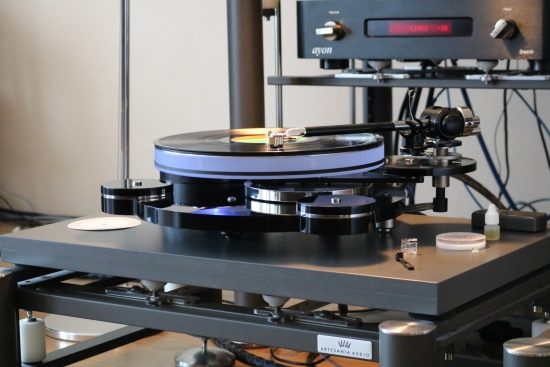
Configuration
In discussing the ideal configuration with Mark, we came to a combination that might seem unusual but which actually works splendidly. The basis is formed by the ~2500-euro Calypso Mk4 deck is one step up from the entry-level model but in its most recent incarnation. Mated with it is the ~2100-euro Illustrious tonearm which is positioned near the upper end of the mid-level section. Further, the standard Calypso platter is substituted for the ~770-euro Upgrade Multi-Layer Platter. To top it off, the ~667-euro Silver Hybrid tone-arm cable is also added. As I had reservations about potentially not liking the “silver”-aspect of this cable, the standard copper “Upgrade” cable was also added. But as it would later turn out, I really needn’t have worried. The total cost the turntable in this configuration sans cartridge is approximately 6000 euro, depending on the UK Pound exchange rate. Not pocket change but certainly also not much for what’s offered and it is most definitely a far cry from what some brands dare ask for their turntables.
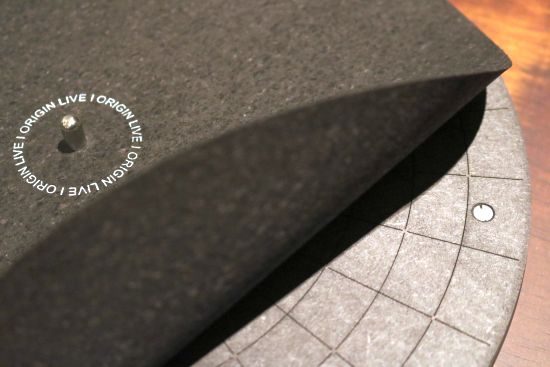
Above and below: Multi-Layer platter, consisting of 4 layers of different materials, or 3 layers if you do not count the upper cork/rubber mat.
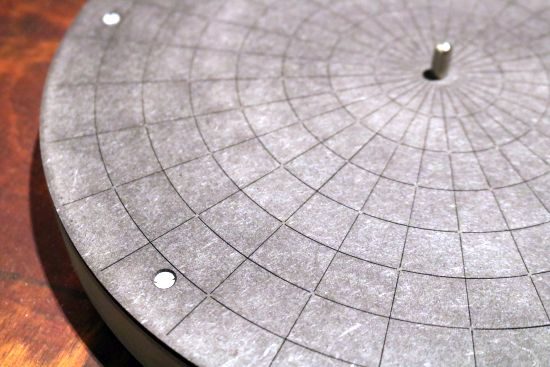
To use an arm that costs almost as much as the deck may seem counter-intuitive but as Mark explained, this would provide the best performance for the total cost. Taking a more upscale deck as the basis and using a lower-end arm would actually be less ideal for the performance. This would not be the first subject on which Mark would turn out to have ideas that deviate from the more established norm, but as I discovered some of the turntable’s peculiarities and experimented with alternatives, it turned out he was right, every step of the way. At this point, I actually think that he is one of the very few designers who actually investigate all the aspects of turntable engineering and carefully re-evaluate everything with respect to the sonic end result. For the Origin Live turntables, Mark uses whatever solution that sounds best, not the one that accepted engineering knowledge dictates as the best solution.
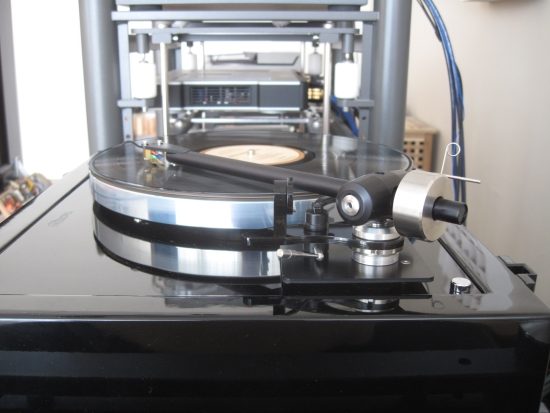
Above: Origin Live Onyx tonearm on a fully-refurbished Thorens TD160B turntable.
Construction
All of the Origin Live turntables have a very unique construction. There is no sub-chassis in the traditional sense, but the platters are also not as rigidly coupled as with traditional mass drives. Of course, the arm has a rigid connection to the platter’s bearing and the distance between these two opponents is fixed. But it is done in a clever way that does allow a small and controlled amount of movement in other directions. It also allows a subtle springiness in the vertical plane. But fear not: it’s not at all comparable to Thorens or Linn turntable behavior. The Origin Live Calypso turntable is super-steady which makes precisely cueing the arm so much easier than with the aforementioned springy sub-platter designs.
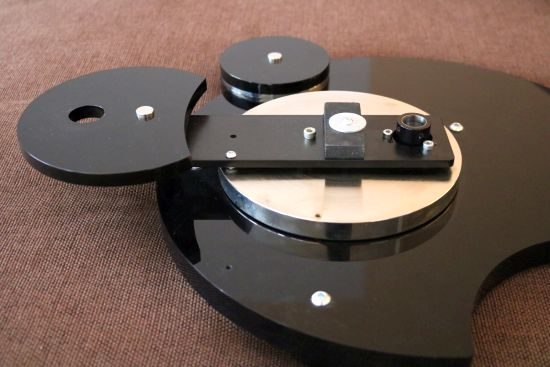
The arm plate is mounted to the main chassis in the middle, allowing the bearing on one end and arm board on the other end to “float” ever so slightly.
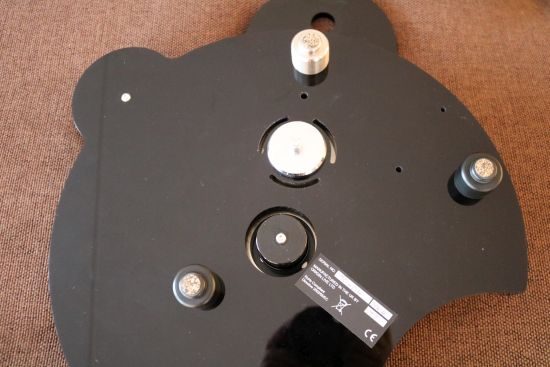
Above: the silver ring is where the arm plate is mounted, note the slits around it that further prevent an overly tight construction. Incidentally, the manual makes a point of setting the height-adjustable feet such that they are never fully tightened against the main chassis for the best sound.
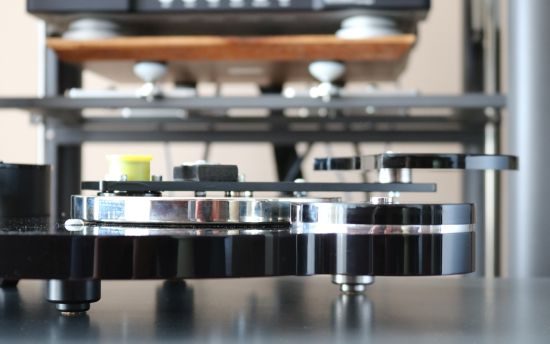
The subtle springiness is achieved by means of partially overlapping layers of metal and acrylic material. Together, they make up the player’s chassis and arm plate, which are coupled in different positions so as to create something slightly similar to a car’s rear-wheel leaf springs. But I hasten to add that this resemblance is only visual. In use, the platter sits entirely still and nothing bounces about. What this particular coupling method does achieve is the avoidance of choking the music into something overly technical as it so often happens with super-rigid turntables, and even with high-end models. If you think of a typical Rega turntable, these are famous for their pacing, and rightfully so, but they accomplish this at the expense of a significant reduction in fluidity, smoothness, refinement, air, and most importantly, the lyrical aspects which I often refer to as musical flow. If you simply clamp everything together very tightly on a single board, you enable fast transfer of energy. This results in the pacy sound of such turntables but you also make it easy for all the other vibrations to mess up the sound. Sub-chassis turntables typically behave very differently because their spring system effectively decouples the platter and tonearm from vibrations in a hopefully carefully adjusted frequency range. The downside of such turntables is pretty much always a reduction in solidity, bass slam, and drive. This is, of course, over-simplifying the matter but my aim for this article is only to bring across how the Origin Live turntables are positioned in-between the two more common extremes.
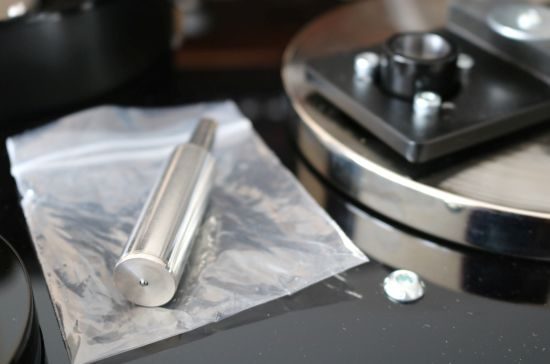
The bearing is precision-made but unlike the bearings of pretty much all competitors’ designs, this one has an intentionally loose fit. As Mark explained, it is not too difficult to make a bearing to extremely tight tolerances that fits with absolutely no play but in listening tests, it became clear that these do not sound as good as his looser-fitting design. As Mark also explained, the play that you can feel when wiggling it around by hand does not relate to the stability that is created when the well is filled with oil and the platter is turning. When in motion, the rotation is completely stable but, again, without impeding the musical flow and choking the life out of the music as it can happen with some extremely over-engineered designs.
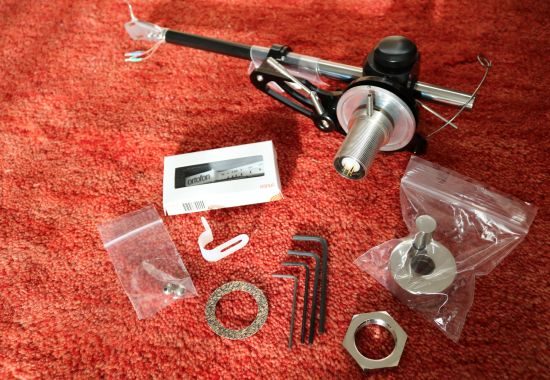
The Illustrious arm is something special, too. Made from a combination of materials it does not have the common gimbal bearing nor an unipivot but a dual-pivot to combine the effortless and free-flowing musical behavior of unipivot designs with the operational stability, full-bodied sound, and bass solidity of gimbal designs.
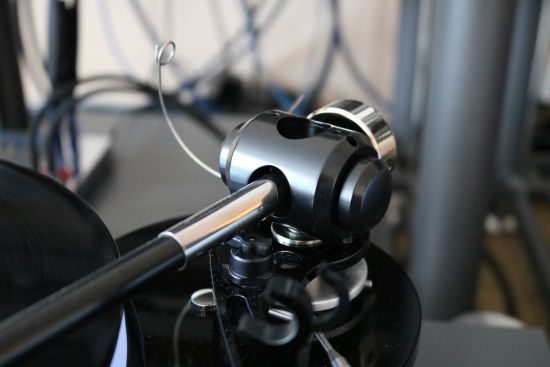
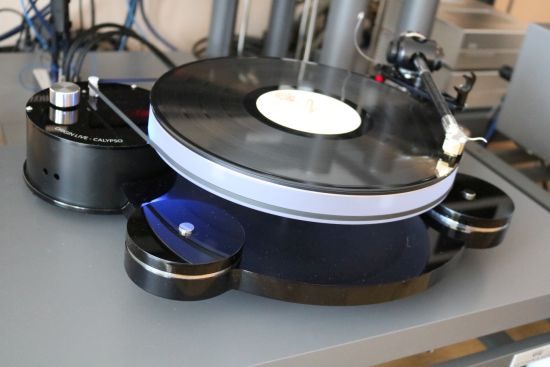
The motor pod contains a very smoothly and quietly running Swiss DC motor and a Light Speed Control circuit. As the Origin Live literature reads: “The ideal way to overcome speed drift is to control the speed of the platter itself rather than the motor. Direct drive decks are renowned for their consistent speed.” But, from personal experience, I know that DD systems introduce their own problems and often make for a “nervous” sound with shorter sustain and decay than with good belt-driven turntables. The Light Speed circuit measures the time it takes between turns using a reflective strip on the underside of the platter and very smoothly adjusting the speed accordingly. As per the official specs, this system achieves a wow and flutter of only 0.04% which is on par with the best DD turntables. The best part of this circuit, perhaps, is that it guarantees the accuracy regardless of belt wear, motor age, pod position, and temperature, meaning that you won’t have to worry about any of these factors. The pulley, incidentally, is made of nylon which is much harder to work with than metal. Here, again, the genius of Mark Baker is evident as he is aware that a higher degree of visual perfection can be achieved with metal but the nylon simply sounds better and so that is what he uses.
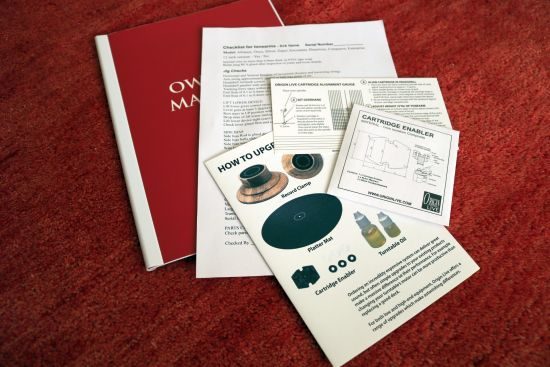
I’ve really only touched the surface of the many facets of this turntable’s construction but, if interested, do have a look at the Origin Live website where all this and much more is outlined in great detail. It’s also worth checking for the many advisory sections, for instance containing articles regarding common misconceptions, guides for turntable calibration, and a very complete section on cartridge selection.
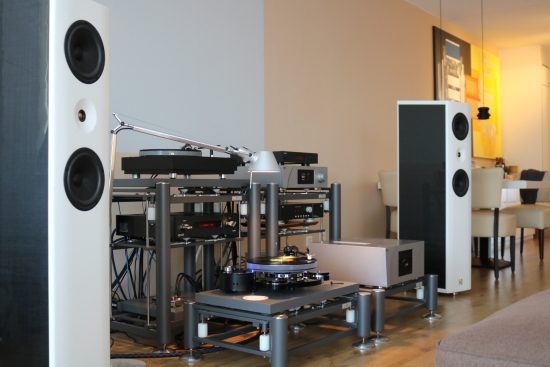
Above: initial setup on one end of the room and using Kroma Audio Carmen loudspeakers
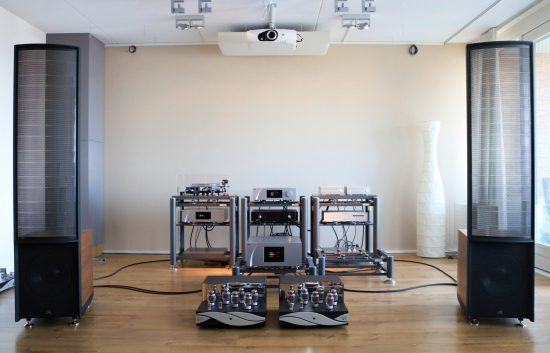
Above and below: later setup on the other end of the room and using both Kroma Audio Carmen as well as Martin Logan ESL15A loudspeakers
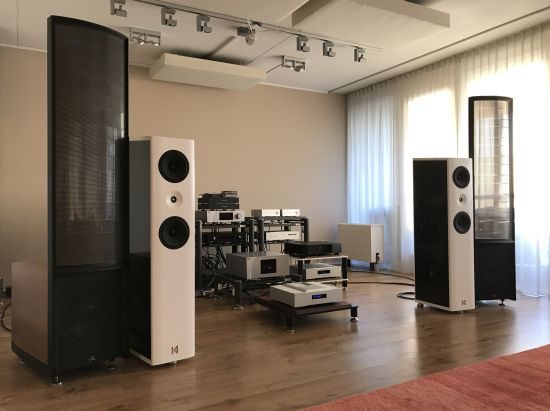
System Context
For this review, I used two different cartridges and two different phono stages. First, the Denon DL-304 MC cartridge was fitted. This is a cartridge that I know very well and have a long history with. I still have one of these myself and so do two of my audio buddies who kindly loaned theirs to me to enable a comfortable direct comparison. One of these DL-304’s has seen very little use and that’s the one that went into the Origin Live player, but not before I had compared it to the others and confirmed that they all sound good. The other turntables were the Thorens TD160-Super and the TD125-II. After completing these comparisons, out went the Denon DL-304 and in came the ViRa Aidas Rainbow MC cartridge. This one has previously done service in a Thorens TD160B with Origin Live Onyx arm and so it also made for good comparison material.
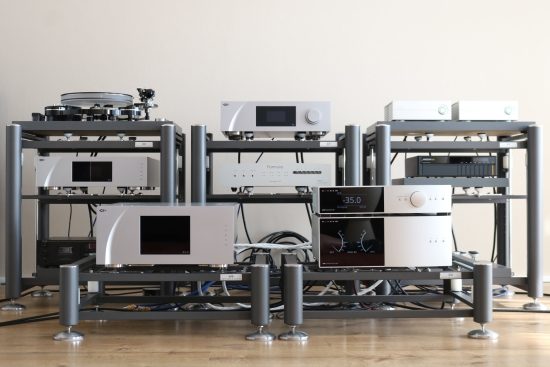
Above and below: Calypso with Anthem STR pre/power amps. The turntable sounded great both on the Artesania Exoteryc rack as well as on the Artesania Modular rack but different. The former allowed it to sound most transparent and precise while the latter maximized the bass slam and the tonal richness in the midrange.
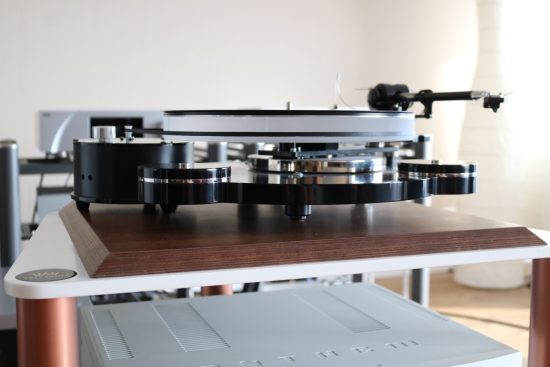
The initial phono stage was the Benz Lukaschek PP-1 which was later replaced with the CH Precision P1, in both cases via the Ayon Stealth preamp. Besides my resident electronics, I also used the Calypso with various other components that happened to be on review, such as the Anthem STR preamp and power amp and a complete Zesto tube system.
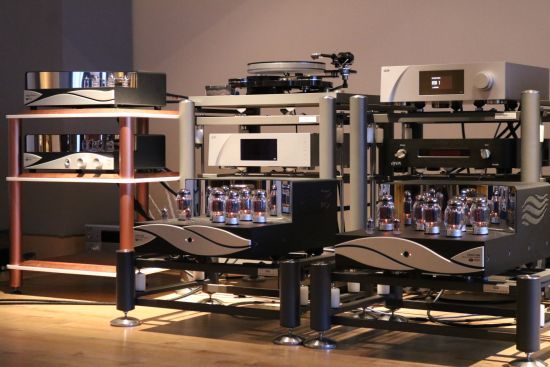
Calypso with Zesto Eros 300 mono power amps, Leto preamp and Andros Deluxe phono stage
The speed is spot-on accurate at 33.3 as well as super-stable: never did I hear any low-level or high-level speed variations, not even with absolute torture tracks. Further, the player does not have any perceptible character of its own, rather, sounding precisely as the record dictates. The one area, really, where the player’s character can be tweaked is in the choice of cartridge.
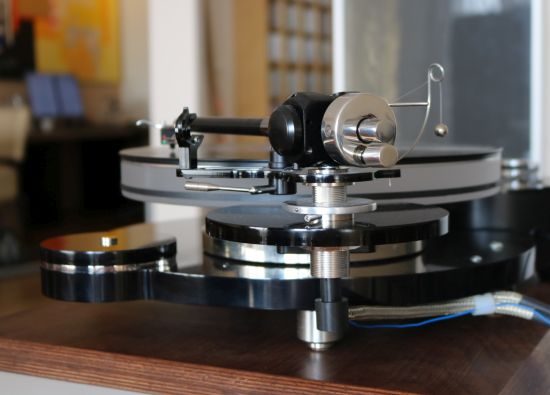
That unassuming tiny horizontally-inserted hex screw is actually a valuable tweaking tool!
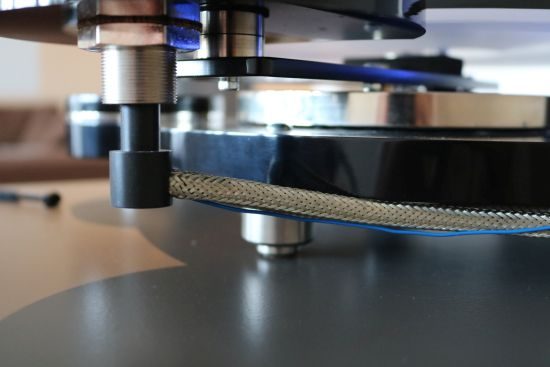
This nut should be well-tightened but only by hand – no tools allowed!
Adjustments
There is very little to adjust but what’s there should be taken very seriously if one is to extract from it the best balance of virtues. Besides the usual adjustments such as VTA, VTF, overhang, anti-skating, and azymuth, there is another adjustment that ties in with the VTA, which is the balance between the tension with which the hex nut on the side and the ring on the underside are tightened.
As the company describes it in the manuals, too much force is never a good thing and the recommended force for the underside nut is the maximum force which can be achieved with a bare hand and no tools. But, of course, some people are stronger than others. I have quite a firm grip and as it would turn out, this resulted in an overly controlled sound: very detailed and spectacularly well-articulated but with the life and musical flow strangled out of it. A little looser certainly got rid of the iron grip that was on the music but along with it went the tightness in the bass. For a while I could not find the ideal balance until I realized that I had also tightened the hex screw on the side quite firmly. After unscrewing it and tightening it again until the point that it just started to grip the shaft I noticed that the sound had mellowed in a similar fashion as with a loosened nut underneath. After some trial and error, I found that the best combination was to tighten the underside nut almost as much as I can with my thumb and index finger and have the hex screw on the side gripping the shaft fairly loosely. This can be done easily and without fear of losing the carefully set VTA because the upper ring will keep the arm’s height to the set position. This combination made for tight and articulate bass as well as an organic, rich, and free-flowing midrange. As always, there are many more factors and every system is different meaning that different amounts of these adjustments may be required but it remains important to realize the potential of the tuning possibilities with these seemingly irrelevant fixation points.
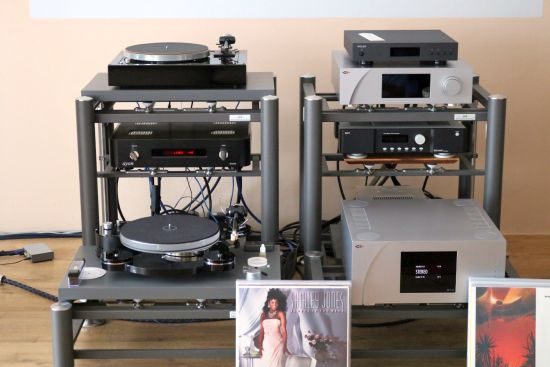
Above and below: comparisons with the Thorens TD160B
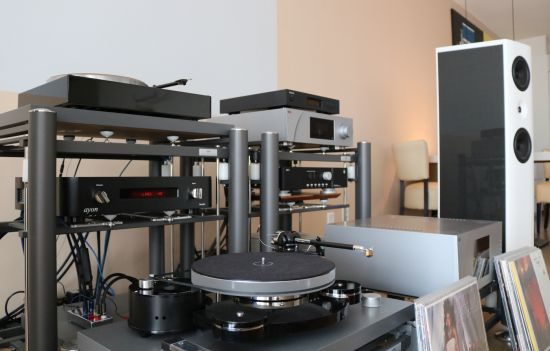
Sound
So, how does this turntable sound? Well, in a word: flabbergastingly good! Tonally neutral, it has absolutely no coldness or hardness or any other sonic clue that can sometimes be attributed to a technically extremely well-executed reproduction. Nope, this turntable’s full-color- and harmonically rich delivery is the antithesis of a cool or sterile sound. Yet, and that’s what’s so fantastic about this player: it has a transparency and resolution of low-level detail that I have not heard before from any other turntable. And, to further add to this, while I have heard other turntables that are either very powerful and dynamic or highly fluid and refined, these two aspects rarely go hand in hand. With the Origin Live, you guessed it, they do. And then some! This player has dynamics and slam that, even after having owned it for several months, still startle me. Oh, and the bass… The Bass! Based on my experience with various belt-driven turntables, including classic Thorens and current Linn models, I had accepted that the bass would never be as rock-solid as that of mass-loaded turntables or Direct Drive models, which introduce other sonic artifacts themselves.
There were two sub-chassis turntables that did provide great bass: the Michell Gyro SE with Tecnoarm and the Avid Volvere SE with SME 309 arm. Alas, although I really wanted to like these turntables, the fierce bass came along with either a dry midrange and rough, dark, treble or an overly controlled delivery. Of the two, I preferred the Avid but even though it sounded rich and highly refined, I found it to be uninvolving. I’m sure that either turntable could have been capable of better performance using different arms or cartridges but, in any event, I did not manage to make them sing. How different it is with the Origin Live Calypso turntable. It is highly lyrical and super-involving with bass that borders on what a Wadia CD player can do and combiens this with a more organic midrange and an even more liquid presentation than even the best suspended sub-chassis players have achieved in my system.
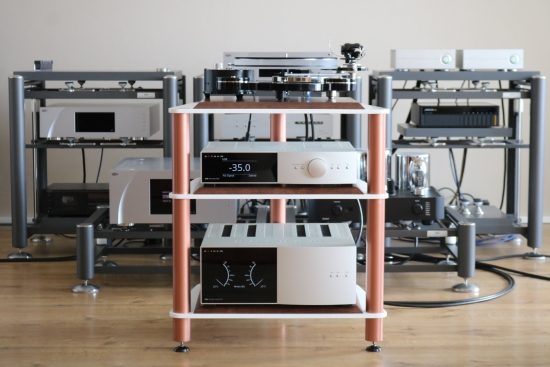
Quite startling, also, is how this player manages to make individual subtle sounds stand out in their own space while all the other sounds are arranged around it in their own spaces. In your mind, you can pick any sound you like and follow it around in the melody as if it’s in complete isolation. But, simultaneously, the player has a musicality and cohesion that is super-engaging. Everything is presented in a highly lyrical manner and in an effortless flow. When playing the same records on the best of my old Thorens player, the TD125MkII, it becomes clear why certain sounds previously went by unnoticed. I can hear them now but they are embedded into a wall of sound that seems flat and uninspiring compared to the room-filling 3D ambiance of which the Origin Live is so effortlessly capable.
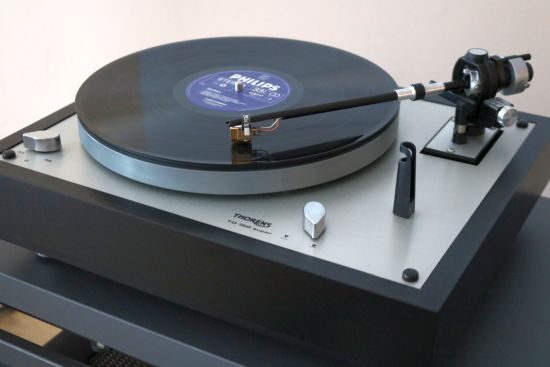
Above: Thorens TD160-Super
Stepping back to the TD160-Super only further flattens the sound and, more seriously, lumps everything together in a big ball of energetic but ill-defined sound rather than the wide and varied soundscape that the Calypso presents. The TD160B with its Origin Live Onyx arm extracts a much fuller bass and a richer, more organic midrange from the humble Thorens but, still, it cannot approach the Calypso + Illustrious combination. Not by a long shot: it is just no comparison.
The Calypso turntable manages to combine all the desired audiophile aspects into a seamless whole that picks you up and takes you for a musical ride. It keeps you at the tip of your seat in anticipation of what the next record will uncover but even though it is so very capable of unveiling microscopic details, it is in no way an actual microscope. This is a music machine, designed to take away all the technical aspects to simply allow the music to come across.
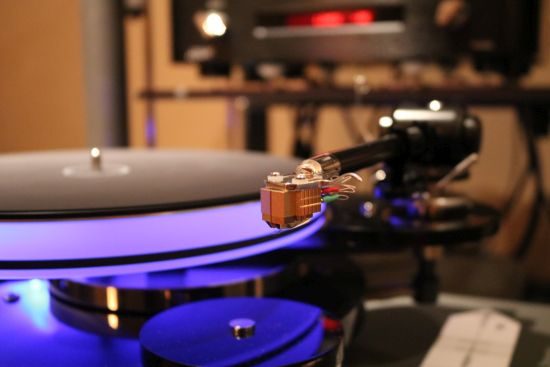
Above: with Denon DL-304 cartridge; below: with Aidas Rainbow cartridge.
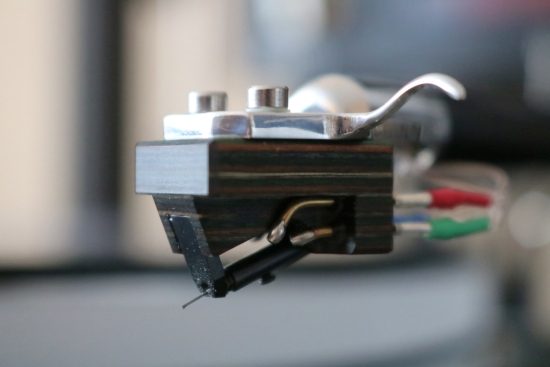
Cartridges
The assessments as described above pertain to the combination with the ViRa Aidas Rainbow cartridge although the turntable also shines with the Denon. With the DL-304, the turntable sounds luxurious and romantic but with better resolution and fuller bass than I have heard before from the humble Denon cartridge with any other turntable. With the ViRa Aidas Rainbow, there is a staggering increase in transparency and transient clarity and a more natural, timbrally more convincing, tonality. This cartridge also shows the Denon to be slightly synthetic in its timbre. Amazingly, in spite of its enormous transparency and even when fitted with the extremely highly resolving ViRa Aidas Rainbow cartridge, the Origin Live turntable never massacres any recordings. In the worst case, a recording may sound flatter or duller than the average but even then, the music still shines through.
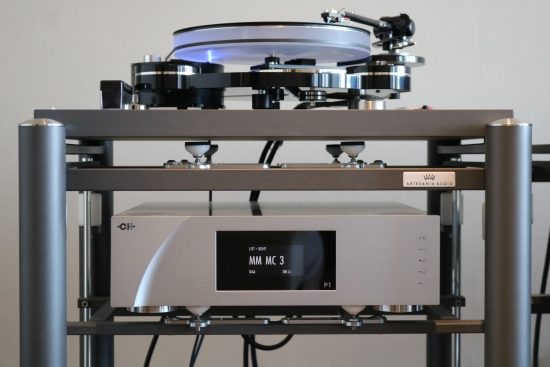
Phono Stages
The majority of the assessments were done using the Benz Lukaschek PP1 phono stage. Far from universally applicable with its 22kOhm termination that cannot be changed, this preamp sounds remarkably good with the two cartridges nevertheless. It’s quite highly resolving, has solid and sonorous bass, a full-bodied midrange, and fluid treble. In an earlier comparison with the Jeff Rowland Cadence, I was already amazed at what this petite preamp was capable of. The Rowland has a more liquid sound, higher resolution, and even airier treble but the Lukaschek PP1 has more solid bass and a more powerful sound, irrespective of the available settings on the Cadence. It wasn’t until I reviewed the CH Precision P1 phono stage that my analog sound was catapulted to sonic heights where I had not yet been before. Combining all that the Cadence does with all the solidity and power of the Lukaschek and further raising the transparency and low-level resolution, the P1 was so very clearly superlative that I had to make the switch. And to think that this whole adventure started with the reviewing of the ViRa Aidas MC cartridge…
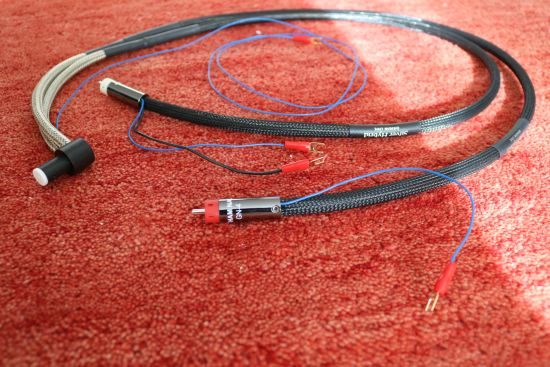
Above: Silver Hybrid cable; below: Standard copper upgrade cable.
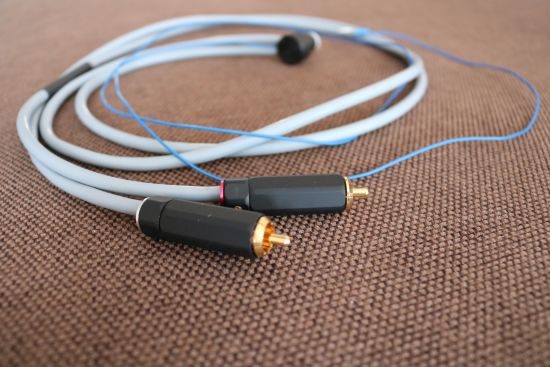
External Tonearm cables
Oftentimes, silver is associated with a whitish, bright, or even edgy sound and even though I know that this certainly need not always be the case, I still feared for it. After I had completed all my assessments using the Silver Hybrid cable, I remembered that I had also requested the standard copper “Upgrade” cable to be included. Honestly, I needn’t have bothered because not once did I feel that the sound was in any way “silvery”. Compared with the Silver Hybrid cable, the standard copper cable is, well, no improvement, rather, it is a big step back. But that only makes sense, given the difference in price. And admittedly Mark already told me but, you know, I had to hear it for myself. Anyway, the standard cable sounds upbeat and lively and not bright or edgy and it is quite involving but after the Silver Hybrid I have to say it is difficult to get used to the regular cable’s comparably drier and thinner sound. The beauty of the Silver Hybrid cable is that it adds (or takes away less) harmonic richness without reducing the speed or the expressiveness. Considering these differences I feel that adding the Silver Hybrid really is a no-brainer. And at 667 euro for the detachable version and only 535 euro for a hard-wired version, it offers a ridiculously good value for money.
Conclusion
The Origin Live Calypso Mk4 with Illustrious tonearm is flabbergastingly good! Tonally neutral, it has absolutely no coldness or hardness or any other sonic clue that can sometimes be attributed to a technically extremely well-executed reproduction. Nope, this turntable’s full-color- and harmonically rich delivery is the antithesis of a cool or sterile sound. Yet, and that’s what’s so fantastic about this player: it has a transparency and resolution of low-level detail that I have not heard before from any other turntable. It keeps you at the tip of your seat in anticipation of what the next record will uncover but even though it is so very capable of unveiling microscopic details, it is in no way an actual microscope. The Calypso manages to combine all the desired audiophile aspects into a seamless whole that picks you up and takes you along for a musical ride. This is a music machine, designed to take away all the technical aspects to simply allow the music to come across.
By now, it will come as no surprise that I am totally smitten with this player. It is a permanent part of my system and I seriously doubt if there is a player out there that can beat it in terms of outright enjoyment and musical flow. And even in technical and audiophile terms, I’ve not heard a better performance than this. I know that much more expensive turntables exist, yet I struggle to think of any single area in which the Calypso/Illustrious combo could be meaningfully improved.
I can’t recommend it more highly – this is a must-hear!